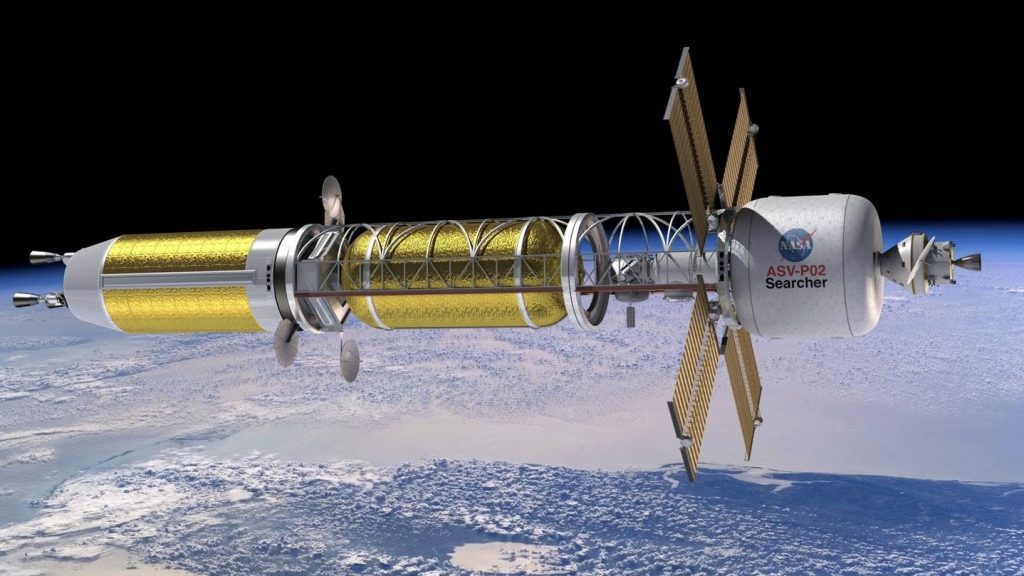
Is using nuclear materials for space travel dangerous, genius, or a little of both?
Posted: 29th July 2021
By Susan D’Agostino | July 28, 2021
 Illustration of a conceptual spacecraft enabled by nuclear thermal propulsion. Credit: NASA.
Illustration of a conceptual spacecraft enabled by nuclear thermal propulsion. Credit: NASA.
The 1977 Soviet satellite Kosmos 954 was supposed to monitor ocean traffic using radar—a technology that works best at short distances. For this reason, the craft traveled in Earth’s low orbit, where solar panels alone could not provide consistent power. And so, the satellite was equipped with a small, efficient, yet powerful nuclear reactor fueled by approximately 50 kg of weapons-grade uranium 235. Within weeks of its launch, Kosmos 954 veered from its path like a drunkard on a walk. The Soviets tried to eject its radioactive core into a higher orbit by way of a safety system designed for that purpose. But the safety system failed. In January 1978, Kosmos 954 burst into the Western Canada skyline, scattering radioactive dust and debris over a nearly 400-mile path. The cleanup and recovery process, which took nearly eight months and started in the subarctic winter, found that virtually all of the satellite fragments were radioactive, including one that was “sufficient to kill a person or number of persons remaining in contact with that part for a few hours.”
https://thebulletin.org/2021/07/is-using-nuclear-materials-for-space-travel-dangerous-genius-or-a-li…